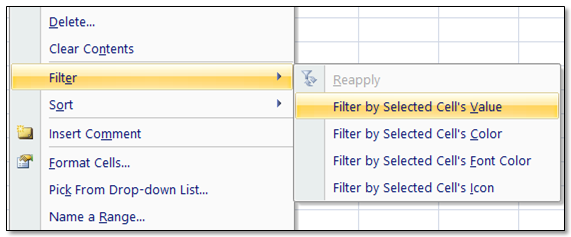Clearly, VLOOKUP
is by far the most frequently used function in this instance, primarily because
it is the more unassuming formula, but also because most Excel users simply don’t
understand how to use the INDEX/MATCH
combination.
The major drawback of VLOOKUP is it requires a static reference in the form of the
first column. Not very cool. INDEX/MATCH on the other hand, is much more
flexible, allowing you use whichever column you choose for your reference. Much cooler.
Let’s take a look at a simple example using the Illustration
below:
=MATCH("Tampa", $A$2:$A$8,0)
INDEX, on the other hand, returns the Value
that you identify by row number in an array. Using the example above, “Tampa”
is retuned by the formula:
=INDEX($A$2:$A$6,4)
Combining the INDEX and MATCH functions
is where the Real Power comes in. Let’s say we want the Code for San Diego. We
can set up a Code Retriever as shown in cells E1:F2, by inserting
the following formula in cell F2 (This will return "141"):
=INDEX($C$2:$C$8, MATCH(E2, $A$2:$A$8, 0))
Using the MATCH and INDEX functions together is truly a Powerful way of extracting data when you need it. Once you try it, you may never go back to VLOOKUP again!









